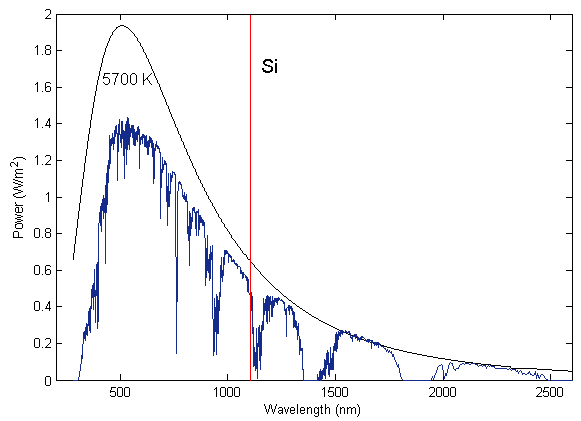Photovoltaics: Multiple Electrons from one Photon
The typical goal for these sort of 'quantum' solar projects is to better match the wavelengths of light the photovoltaic system can absorb to that of the spectrum of light that is produced by the sun (and filtered by the atmosphere). The theoretical limit for Silicon alone in a photovoltaic system is 33.7 %, which is known as the Shockley-Quiesser limit. Of course, most commercial PV systems are only around 12 % efficient or less, so there is still considerable room for growth. An example of such a spectrum-matched system is Spectrolab's space photovoltaics, which are actually stacks of multiple photovoltaic systems all operating at different wavelengths, and achieve roughly 30 % efficiency in a commercial product.
Overall,this would be a really interesting paper except for one obvious drawback: the active layer of quantum dots is really really thin. There's only a single layer of quantum dots and given an average diameter of 10 nm, that's not very think for visibile light. Compare that to a standard Silicon cell being hundreds of microns, or a thin-film cell at 10 μm which is still a thousand times thicker. In fact it's so thin that they absorb only 1-2 % of the incoming light.
Since the problem with quantum dot strategies is always getting the electrons out, and not absorbing the light, I'm not sure that this work will have a great impact when scaled up. At the very least, however, it does show that it's possible to build a quantum dot solar cell that works as advertised, producing more than one electron per photon, and doing that quite well.


Comments 0
EmoticonEmoticon